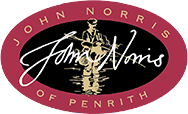Spider set ups with Mike Tinnion
By Mike Tinnion
Rivers International Champion and former England Rivers Team Manager

While most anglers will pick dry flies with the greatest attention to detail. When it comes to wet flies, or “spiders” as the modern term seems to be, often it appears that whatever is hatching, a random selection of two or three appears on the leader. At worst without knowing anything about entomology, match the size and colour of your wets to the naturals hatching or falling into the river.
As a starting point a small selection of the following flies would cover a lot of the hatches.
| Pattern | Size | Hatch |
|
Waterhen Bloa Greenwell Spider Hare Lug & Plover |
14 - 16 14 - 16 16 - 18 |
Large Dark Olives Olive Upright Blue Winged Olives |
| Partridge & Orange | 14 - 16 |
Stoneflies, Sunk spinners. Spinners |
| Snipe & Purple | 16 - 18 |
Iron Blue Duns Midges |
| Black Spider | 14 - 16 |
Midges Hawthorns Black Beetles |
| Partridge & Yellow | 14 - 16 |
Pale Watery Yellow May |
| March Brown Spider | 12 - 14 |
March Browns Brook Duns |
| Invicta | 10 - 12 |
Hatching Sedges |

Localised hatches such as Grannom will add to your box. But with these flies and a few size 14 Hares Ear and Pheasant Tail nymphs (either beaded or not) on the tail of the leader for searching patterns will equip you well.
At worst, with nothing rising, my go to searching leader would be;
Size 14 PTN Beaded or not
Size 14 Partridge & Orange
Size 14 Waterhen Bloa
I hope this helps on a topic which is rarely spoken about nowadays, keep your eyes out for the next blog tackle for spider fishing.

